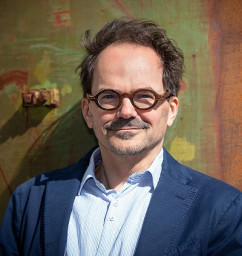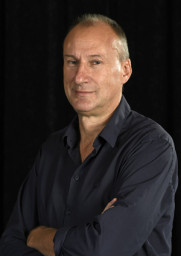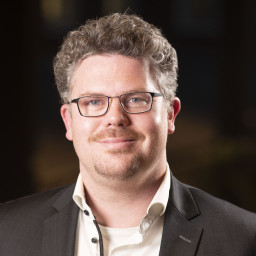© 2025 SURF
Conclusion and general discussion regarding brokers in the SME network across Design and High-tech industries
DOCUMENT
This paper analyses the ways in which informal mediation channels facilitate service delivery in the Citizen Service Bureaus at the Municipal Corporation of Delhi and give rise to an interplay between formal and informal institutions. In particular, the personal backgrounds of brokers as informal mediators and how they ensure their acceptance amongst service seekers are explored. Further, the motivations of the service seekers to solicit help from these mediators as well as institutional responses from the municipal administration along with other relevant actors like the Government of National Capital Territory of Delhi are examined.
MULTIFILE

For German-speaking tourists, an Oriental market (in Arabic: souq) is an exotic place representing the ‘Otherness’. Referring to this Oriental context, the article aims to answer the following questions: What are the tourists’ imaginaries and social narratives and what is the role that cultural brokers play? Gaining insight into the imaginaries and on-site performances of German-speaking tourists of a mega-cruise liner will contribute to the discussion of imaginaries and embodied performances in general as well as the mediation and the construction of space. The research reported upon in the article is part of a larger field study (2012–2014) in Souq Muttrah, the oldest and formerly main market in Oman. Participant observation, photography and in-depth interviews with different types of tourists, local customers, cultural brokers and on-board employees were conducted and marketing material was analysed. Results indicate that in the marketing material, the tourists are already beginning to travel backwards in time. During their visit to the souq, the multi-sensory performances and embodied imaginaries are enhanced by stories of the Arabian Nights. Cultural brokers play an essential role in ‘localizing’ the tourist experience. They adjust their own identities and direct the tourists’ performances at different stages, similar to an Oriental theme park, for example, they stop at a frankincense shop.
DOCUMENT

The Erasmus+ funded project Socially Engaged Universities (SEU) is aiming to explore different models of community university partnerships (CUPs) and to share experience and expertise of how European Universities can work with and for their local communities through “Third Mission” activities in addition to their core teaching and research tasks. Within the framework of City Deal on Education Delft, the knowledge broker was appointed to develop the City Lab Delft (Tanthof). Reflections on the role of the knowledge broker in its first 18 months of functioning are presented here. Different parties involved in two projects (cases) were interviewed to assess the benefits and challenges that were experienced with the position of the knowledge broker. We spoke with strategic advisors of the municipality, professionals from the neighborhood, and different representatives of the knowledge institutions. These parties were recommended by the knowledge broker. The question we tried to answer was: “What are the benefits and challenges of working with a knowledge broker, according to the three involved parties?” Different partners of the knowledge broker were interviewed between June 2020 and April 2021. For more information about the project please visit: www.seuproject.eu.
MULTIFILE

The objective of this study is to shed light on the added value of the services of five disciplines in M&A advisory in the SME domain: accountants, bankers, business brokers, fiscalists and lawyers. Theory is inconclusive in the added value of advisory services and research on the subject is hardly available. RBV predicts direct benefits in using advisory services in M&A, leading to less obstacles in and directly after M&A or lagged effects on more renewal of the firm. The theory of structural holes, agency theory and management entrenchment theory on the other hand predict neutral or negative effect of advisory services in M&A. The dataset includes 899 mergers and acquisitions (1) completed before 2003; (2) with an acquirer having bought 100% of target shares or assets; (3) of German, Belgian or Dutch origin; (4) of non-listed firms; (5) where acquirer and target firm are not member of the same family. Using (M)ANOVA’s and controlling for the effects of more than one advisor involved, the outcomes show consistently that the M&A advisory services do not reduce obstacles like financing, misinformation and culture and staff problems during or immediately after M&A. Looking at lagged effects of advisory services in the period of two years after M&A strategic more renewal by innovation occurs if bankers, fiscalists and lawyers are involved. Involvement of accountants and business brokers on the other hand decrease renewal.
DOCUMENT

Culture and tourism have a symbiotic relationship that has the potential to make places more attractive and competitive. This review of the OECD report on The Impact of Culture on Tourism analyzes the ways in which culture and tourism can act as drivers of attractiveness, paying particular attention to the role of potential policy interventions to strengthen this process, including the development of partnerships, funding issues, product development, and marketing. A number of key future issues are identified, and evolving debates in the relationship between culture and tourism are outlined.
DOCUMENT

In this chapter, we first summarise the findings from the country chapters on the multiple meanings of SA, documenting terms, translations and contrasting understandings between citizens and public officials. Second, we highlight how civil mobilisation tends to be cyclical over time and is often mediated by brokers. Strategies to spur stakeholders into action rely on a delicate balance of both collaboration and confrontation. Third, we examine the responses from authorities to SAIs, finding that reactions are uneven and that all civic innovators fear appropriation or co-optation by officials. Fourth, we assess overall outcomes of Arab SAIs and highlight that the transformative potential of SAIs exists especially at municipal level, if four conditions for success are present (trust, proximity, endorsement, evaluation). We also point out that the actual outcomes of SAIs in Arab societies have, so far, been limited due to design deficiencies (emphasising short-term objectives and limited context sensitivity) or because of officials’ resistance in active or passive forms. We characterise SAIs as a discursive action format that is best understood with a relational approach to power. In a final section, we formulate recommendations for activists, officials and donors on how to make SAIs more effective.
MULTIFILE
Higher education is tasked with preparing students for a culturally diverse and globalizing world. Additionally, western nations have an increasingly diverse student population and know the success of their students will depend in part on being able to navigate diversity. There is therefore good reason for institutions of higher learning to promote and facilitate the development of ‘global citizens’ – people who can work and relate across borders and boundaries, both real and perceived. However, teachers are not necessarily equipped to foster this learning. Many teachers are used to a reproductive way of teaching while the learning that is needed here is identity learning, directed at dialogue, internally as well as externally. This chapter proposes the potential of creative, expressive and reflective writing as a way in which personal development – a form of a reflexive internal dialogue – can be fostered to promote cultural healing and global citizenship. The writing method will be described and a case study on cultural healing in the context of Canada’s reconciliation efforts with Aboriginal people will be used to illustrate the learning process involved. The processes of writing the self and re-narrating identity has several promising benefits for both students and teachers in higher education. First it allows us to learn more about ourselves and what blocks our learning (i.e. promotes self-reflection). Second, it allows us to change our story and our identifications and therefore choose differently (i.e. self-direction). Third, it is a companion on the road of life where we literally learn to talk and listen to ourselves and articulate the tacit knowledge that can be unearthed through narrative, journal, and poetic writing. Fourth, the method is playful and creative and although tears are frequently shed in the process, students report a great enjoyment in writing and sharing their stories with others. It is a meaningful dialogue about experience and also has the potential of promoting cultural (Lengelle, Jardine, & Bonnar, 2018) healing in the context of a very diverse student body (Banks, 2015). It also has the potential for creating new bonds in the classroom and allows teachers in higher education to engage in the difficult work of facilitating global citizenship learning. The internal dialogue described here also allows us to ‘clean up’ judgements and become aware of the need to reach out to others. Not only the actual sharing of vulnerable writing in a class or online setting shows us we are not alone, but ‘writing the self’ focuses deliberately on where we have become fearful about our own and others’ identities and allows us a learning process to unearth those things, heal them in order to reach out to others.
DOCUMENT






